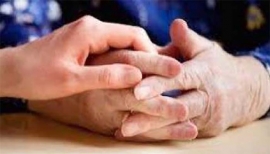by Sheila Kun, Salesian Cooperator
Growing up in a Chinese family, the expression of love was not always verbal; “I love you” had not been uttered explicitly by my parents. Nor was it in their culture or tradition that they would openly praise the children for a job well done. As a matter of fact, the approval came from perhaps a smile, or tear drops swimming in their eyes with pride. Moving to America, one of the culture shocks is how love is expressed so openly, both in words and action. This is a good thing. We learned to embrace this cultural norm by conveying our love freely and with no reservation. However, not all elderly folks could emulate the young by saying I love you liberally. Yet I would encourage you to observe their expression of love in their subtle way. I will share examples of the art of saying “I love you” without saying “I love you” from my own personal experience.
Take my own marital relationship as a case in point. After being married for almost 48 years, I have not received flowers, jewels or even a wedding ring. But the sense of unconditional love is strong and felt on many occasions. On the morning when I received the news that my older brother passed away, the news that was not unexpected, I gathered energy and decided to go to work anyway. To me, it would make no sense to mope around at home, focusing on the sad news. Instead I went on my business of going to work. Wiping away my tears, I felt a warm embrace from behind and heard the question from my husband: “you want me to drive you to work?” Love was injected into my whole body without hearing the words “I love you”. Now, caring is not confided to marital relationships seen and heard about even when you live in a community with young and old confreres. Another story: I heard of an elderly brother being the centre of attention for that community. The younger confreres would take terms in checking on his wellbeing. Words of kindness and comfort permeated the community; the good mornings, the “I am checking in with you and see if you have taken your medicine” and ensuring physical comforts ran freely in this community. There is no marital promise to love in sickness and in health, but the love for their brothers is so loud and clear.
Another loving story brought me almost to tears. This is a story of a young confrere probably having a “bad day”. We all have those days when things in life don’t go our way, we get discouraged and upset. The wise, the sage (meaning the elderly) see through this from their rich experience in life. In this case, the elderly confrere waved the young confrere and sat him down. There were no words of “I am your BFF, you can tell me your problems”. The elderly confrere simply held the hands of the young with one hand and drew the sign of the Cross on his forehead. He simply uttered: “Go forward Brother, the Lord is with you.”
We recognize the power of love and caring, and we should use it both deliberately and randomly. Don Bosco is right; the young need to know they are loved, and we need to let them know explicitly. Therefore, I truly believe every one of us can find the opportunity to say “I love you” to the young, the old, the distressed, the un-churched souls. Find your own way to say “I love you”. You will be surprised that your clever way of conveying love is very contagious. You learned it from the love of God and His accompaniment every day.

